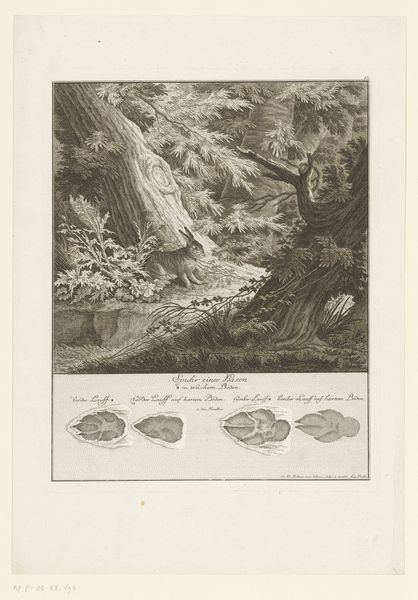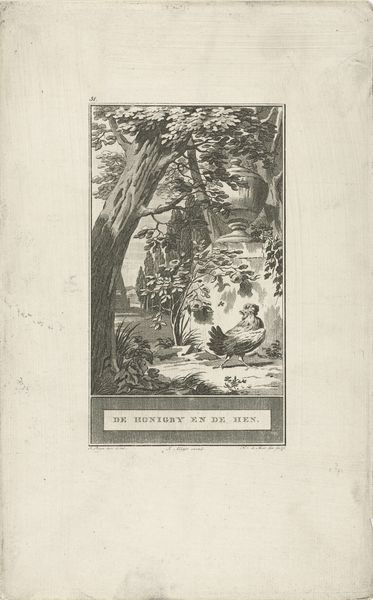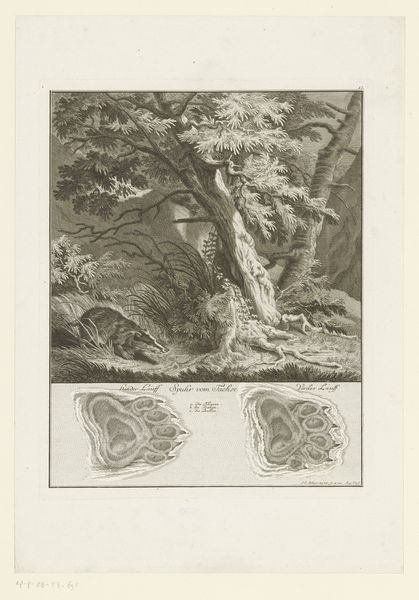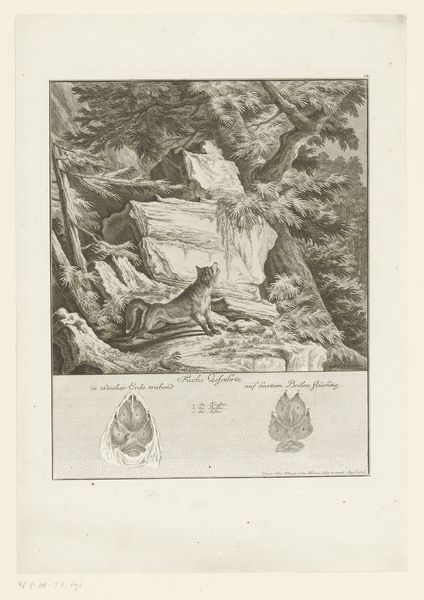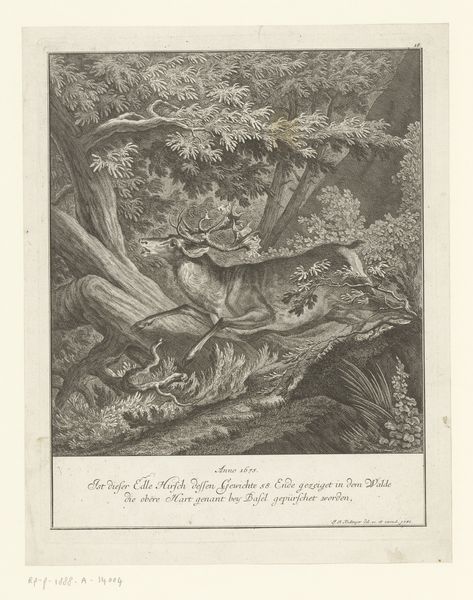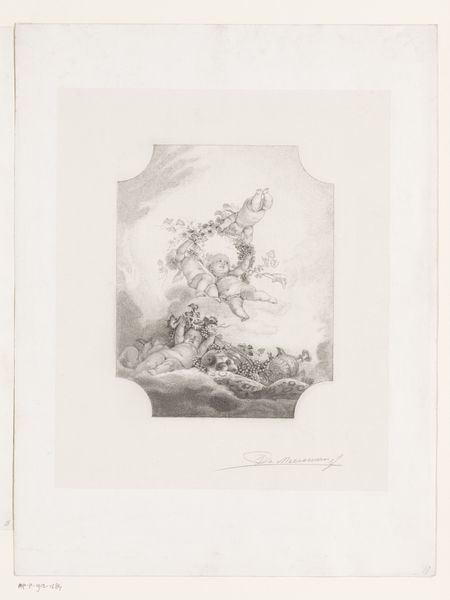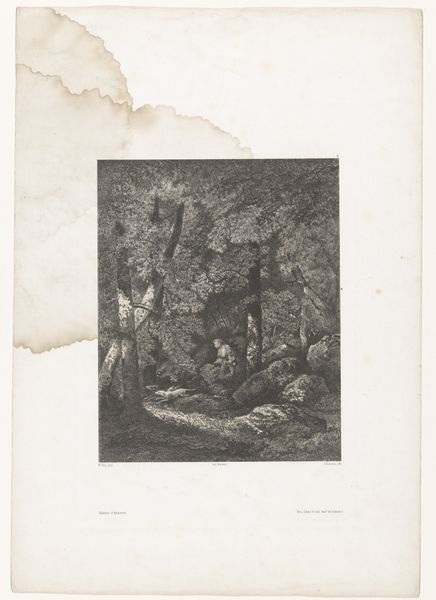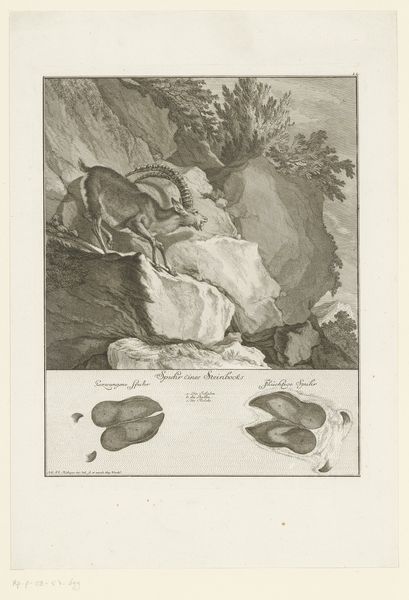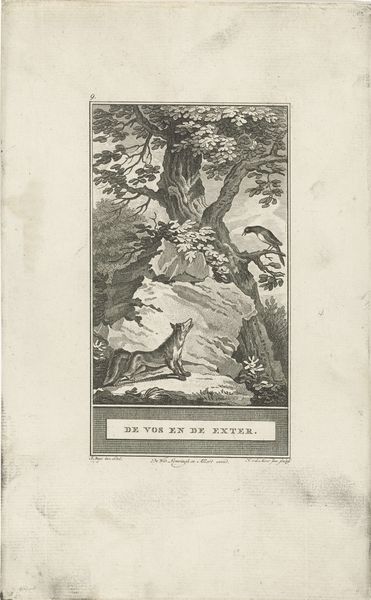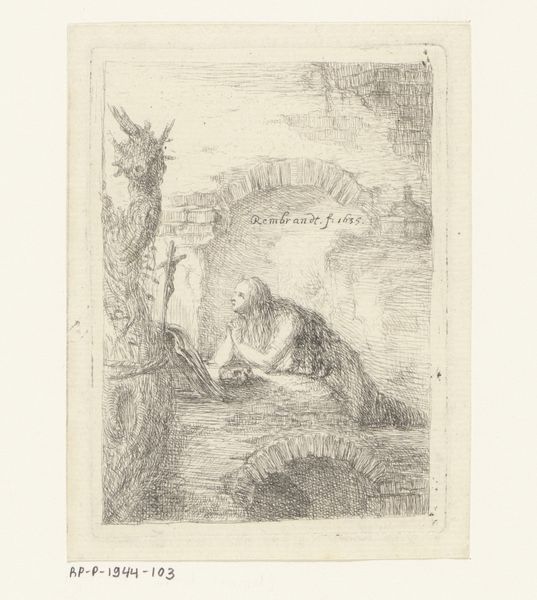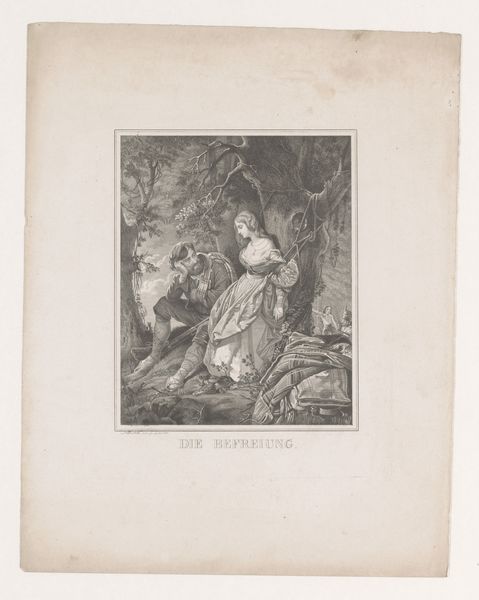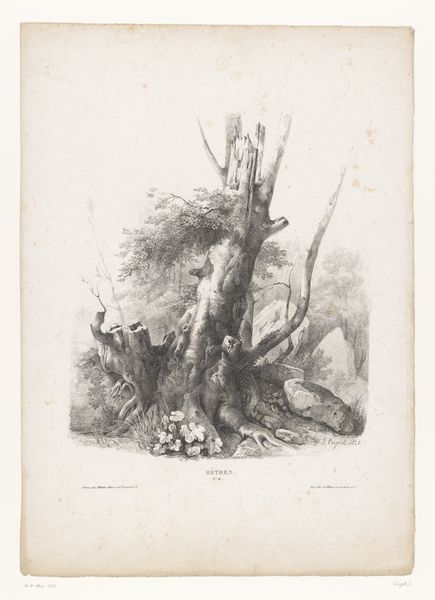
#
aged paper
#
light pencil work
#
photo restoration
#
ink paper printed
#
parchment
#
old engraving style
#
traditional media
#
retro 'vintage design
#
personal sketchbook
#
forest
#
old-timey
Dimensions: height 380 mm, width 301 mm
Copyright: Rijks Museum: Open Domain
Johann Ridinger made this engraving of a ‘Marter en wezel met hun sporen’ – a pine marten and weasel with their tracks – in eighteenth-century Germany. The image depicts the animals in their natural habitat, with detailed representations of their footprints below. However, this is not simply an innocent depiction of wildlife. Ridinger’s prints were often included in hunting manuals, offering visual guidance to aristocratic hunters. The detailed rendering of the animals’ tracks would have helped hunters identify and pursue their prey more effectively. The natural world was then often seen as a resource to be managed and exploited, reflecting the hierarchical social structures of the time. To fully understand this image, we might consult period hunting manuals and social histories of eighteenth-century Germany, paying attention to how class status structured the relationship between humans and animals. We might also look at the institutional history of the print market. By doing so, we begin to see how art is always embedded in its social and historical context.
Comments
No comments
Be the first to comment and join the conversation on the ultimate creative platform.
